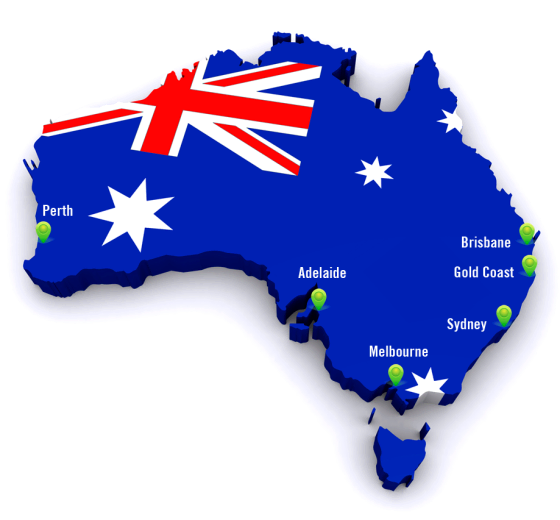Continued article Overview of the Australian education system , let’s learn more about the training systems in the Australian education system!
1. General training
In the general education program in Australia, students will spend 13 years studying in school at the following levels:
- Elementary school: includes Preschool (Foundation), grades 1 to 6 for states of Tasmania, Australian Capital Territory, Victoria, New South Wales, grades 1 to 7 for states: Western Australia, Northern Territory, South Australia , Queensland. Tuition fees range from 6,000 – 10,000 AUD/year
- High school: From Grade 7 to Grade 10 or Grade 8 to Grade 10. Tuition: 6,000 – 15,000 AUD/year.
- High School: From Grade 11 to Grade 12. Tuition: 10,000 – 30,000 AUD/year. This is a very important level because the results will be used for university admission.
At the general education level, children will learn knowledge in the fields of: (1) English, (2) Math, (3) Science, (4) Social Sciences and Humanities, ( 5) Arts, (6) Languages, (7) Health and Fitness, (8) Engineering. A special feature of Australian education is that the training program focuses on encouraging creative and proactive thinking among students. In addition to subject knowledge, students are also trained in soft skills such as public speaking and participating in outdoor activities. These are the foundations of knowledge and skills that help students develop themselves throughout their lives. After completing the high school program, students will be issued a Senior Secondary Certificate of Education.
2. Vocational training
Australian vocational education and training attracts many Australian and worldwide students to study because of its globally standardized quality. This is a program that does not focus on mere theories in books, but focuses on practical knowledge and skills to help students fully be able to start handling real-life work after finishing the course. learn. Students can participate in an Australian vocational training program after graduating from high school or high school. However, for Vietnamese students, it is recommended that they graduate from high school if they want to participate in the program. A special point is that after receiving an Australian vocational certificate, students can continue studying to get a university degree if they want to pursue an in-depth path of study.
The Australian vocational training program spans many fields close to life such as: Economics, Preschool Education, Information Technology, Health, Services, Tourism, Construction,… Be sure to join. By participating in an Australian vocational training program, you can absolutely join the workforce immediately after graduating and Australian vocational qualifications are recognized globally. You can learn more about the Australian vocational training program at link.
2. Undergraduate training
According to QS World University Ranking statistics, Australia owns 7 out of the world’s top 100 universities, which proves the outstanding educational quality of its undergraduate training programs. in Australia. There are two types of undergraduate training programs with different training time frames:
- Bachelor Degree is 3 years
- Bachelor Honors Degree is 4 years.
According to Australian Government statistics, Australia currently has 41 universities, including 38 public schools and 3 private schools. In university training programs, schools focus on developing students’ self-exploration and research thinking. Problem solving skills are promoted, helping students develop creative and proactive problem-solving thinking. Please follow Hung Nguyen’s website to learn useful information from universities across Australia.
3. Postgraduate training
There are 2 programs for those who want to improve their post-graduate education: Master’s study abroad and Post Graduate program.
Master’s degree study abroad program usually lasts from 1 to 2 years with 3 forms as follows:
- Master degree – credit format: The program requires you to study courses for credits. The main form of learning requires you to discuss in class, practice in a real environment, …
- Master Degree (Research – research type): The program requires you to complete a scientific research project, very suitable for those who are passionate about research and specialized research. deep.
- Master degree (extended – expanded form): This is a study-by-doing program that connects theoretical knowledge with the practical environment in organizations and businesses.</ li>
With Post Graduate program: lasts 1 year. After completing the program, you will be issued a certificate of completion. The Post Graduate program focuses on in-depth, practical specialized knowledge.
4. Postgraduate training
In Australia, there is an English course for international students called ELICOS. The course lasts from 2 to 48 weeks depending on the learner’s level and goals. During this time, you will study English full-time. The interesting thing is that most universities and vocational training schools are affiliated with this ELICOS. Therefore, it is very convenient for Vietnamese students who want to improve their English proficiency before entering the official semester of the program they are studying. For those preparing to study university in Australia, you can take a university preparatory English course. In this course, you not only learn simple English communication but also learn English in combination with some subjects at University. This helps students more easily grasp knowledge when starting the study program.
For more information about studying abroad in Australia, please contact Hung Nguyen Education!







